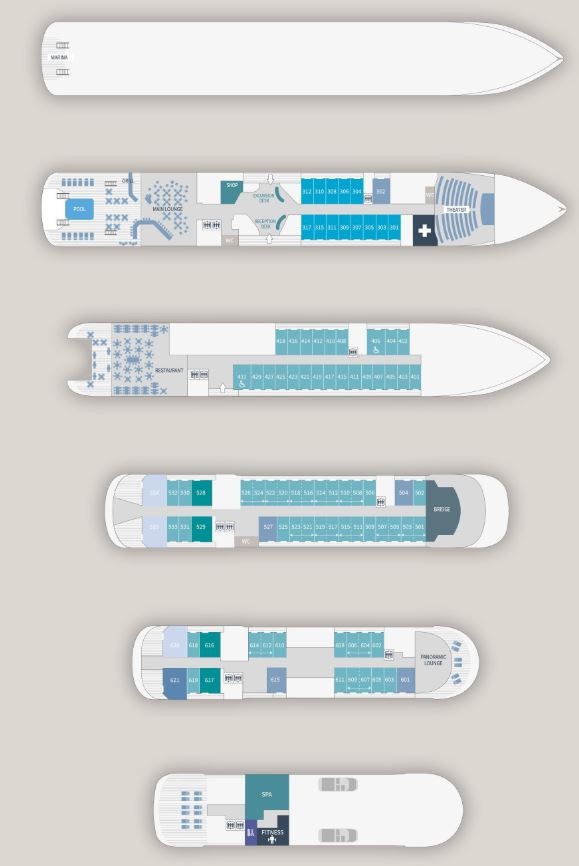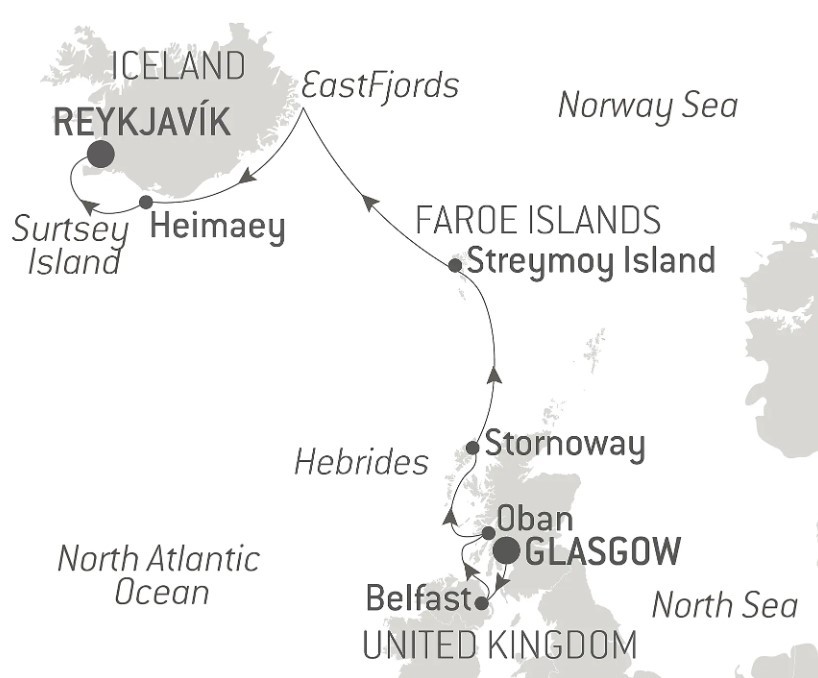
In partnership with RADIO CLASSIQUE and with featured guest Alain Duault.
From Glasgow to Reykjavik, PONANT brings you a 9-day cruise aboard Le Champlain to explore the most beautiful landscapes of Ireland, Scotland, the Faroe Islands and the coast of Iceland.
Throughout your journey, you will benefit from an excursion included per person per port of call, to choose from a selection offered by PONANT. During this cruise, climb the Eldfell volcano on the island of Heimaey, observe the spectacular Langjokull glacier, or discover the three sites along the Golden Circle from Reykjavik. The diversity of experiences on offer promises you intense and varied moments (to discover the full range of excursions, go to the itinerary tab).
From Glasgow, Scotland’s welcoming cultural capital with a rich artistic and architectural heritage, Le Bellot will sail towards Belfast, where you will be able to visit the Giant's Causeway. This massive geological formation is a UNESCO World Heritage Site and features over 40,000 basalt columns.
You will then reach Oban, capital of the county of Argyll, considered the cradle of Scotland, and its spectacular coastlines to the west of the Highlands.
In the Hebrides, you will call at Stornoway, the main town on the island, built by the Vikings in the 9th century. One of the most important prehistoric sites in Scotland can be found here: the Calanais Standing Stones.
Le Champlain will then sail north towards the the Faroe Islands, Denmark’s northernmost autonomous territory. In this isolated archipelago, you will immerse yourself in a wild and spectacular natural environment. In Streymoy, you will enjoy sailing around cliffs home to bird colonies. Here, the Viking legends and the Nordic cosmogony are never far away.
On the edge of the Arctic, with its vertiginous fjords, volcanoes and waterfalls, Iceland offers up a simultaneously romantic and wild face. In the East Fjords region, where life is organised around fishing, you will discover a jagged coastline and alpine landscapes before reaching Heimaey. This is the only inhabited island in the Westman archipelago. An exceptional place composed of volcanoes and almost-desert landscapes, it is also a refuge for many colonies of birds, including gannets.
Finally, you will arrive in Reykjavik, the world’s northernmost capital, your disembarkation port.
- In partnership with RADIO CLASSIQUE and with featured guest Alain Duault.
- A cruise off the British and Icelandic coasts via the Faroe Islands, to discover the treasures of these ancestral lands and of the islands of the North Atlantic.
- Wonderful sailing experiences in the Faroe Islands and Iceland.
- Make the most of an excursion included per person per port of call during your cruise thanks to the selection made by our destination experts.
- Scenery: volcanic islands, volcanoes, black sandy beaches, rugged cliffs, waterfalls, glaciers, icebergs, heather moors, lowlands.
- Wildlife: whales, orcas, grey seals, bird colonies (gannets…).
- UNESCO World Heritage Sites: from Belfast the mysterious Giant’s Causeway site.
Prices quoted here are often dependent on currency fluctuations. Please check with (01432 507450 or info@small-cruise-ships.com) for the very latest price, which may well be cheaper than the one advertised here.
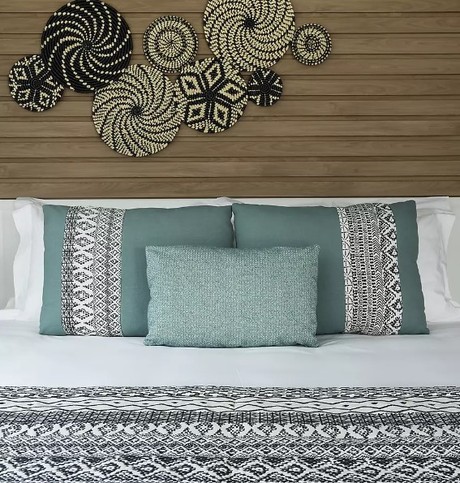
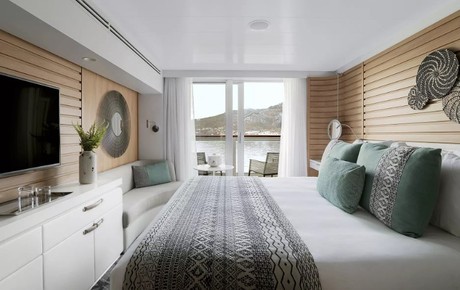
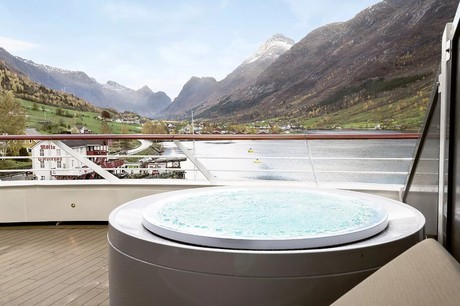
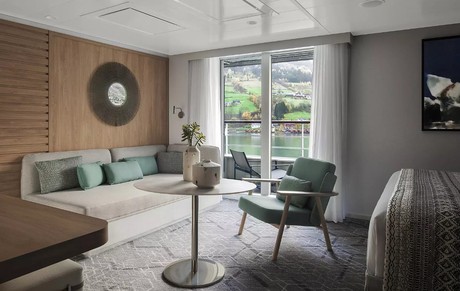
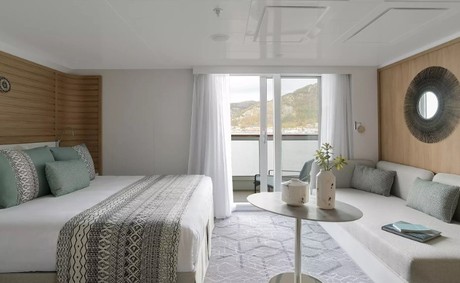
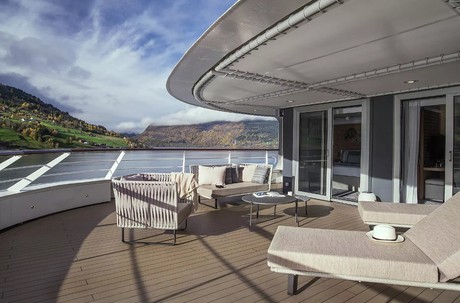


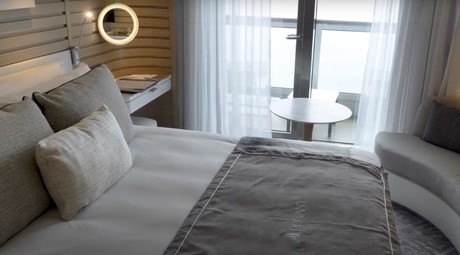
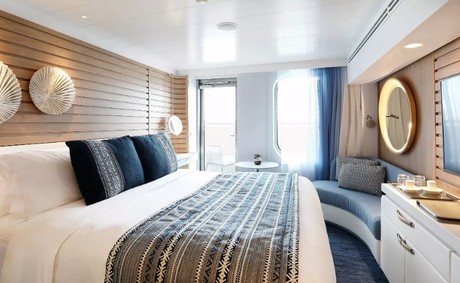
In the heart of the Clyde Valley, the bustling city of Glasgow contrasts starkly with the wild beauty of the surrounding countryside. Scotland's biggest city overflows with landmarks from its extensive artistic heritage and outstanding architectural tradition. The city's chequerboard layout makes walking through the major pedestrian thoroughfares easy: go with the flow and let the lively street atmosphere take you past the many Victorian monuments. Don't miss the collections on display in the numerous museums and art galleries. The Kelvingrove Art Gallery and Museum is an outstanding example.
The capital city of Northern Ireland is located on the very tip of Belfast Lough, in the north-east of the Emerald Isle. Along the waterfront, the building shaped like a fragmented liner is non other than the Titanic Belfast, a homage to the famous transatlantic liner, with full-scale reconstructions making for an insightful experience of the Belle Epoque. In the historical centre, you’ll also travel back in time when you see the majestic Edwardian columns of the City Hall, and the imposing neo-gothic towers of Queen’s University for example. The carved wooden façades of the Victorian pubs will certainly entice you in for a pint of beer or chilled cider.
Oban is on the west coast of Scotland, opposite the Isle of Mull. It is the capital of the county of Argyll, a rural region of the Highlands considered to be the cradle of Scotland. Coming from Ireland, the Gaels settled here, bringing their language and culture. From “the Little Bay”, its name in Scottish Gaelic, you will arrive in Kilmartin Glen, the site renowned for having the largest concentration of Neolithic and Bronze Age remains in Scotland. Among this spectacular site’s 350 ancient monuments, you will discover standing stones, alignments of cairns and stone circles. Glen Coe Valley will then reveal its dramatic landscapes, shaped by volcanic activity. This valley, one of the wildest in Scotland, has been used as a location for the series Outlander. The discovery of the region will end with a visit to a whisky distillery, a unique opportunity to taste an exceptional product.
Discover Lewis, the largest island of the Hebrides, considered to be the cradle of Gaelic culture. Here, the peat- and heather- covered valleys and lochs stretch on to infinity, and numerous bird colonies have taken up residence in the long, jagged coastlines where. Not far from Stornoway, the island’s main town, built by the Vikings in the 9th century stands one of Scotland’s most prominent prehistoric sites: The Standing Stones of Callanish. Dating back to more than 3,000 years B.C., these imposing stones placed in a cruciform pattern were laid out according to the moon and stars and their main purpose was to keep track of seasonal cycles, as this was essential for farmers at the time.
Streymoy Island is the largest and most populated of the Faroe Islands, with 22,500 inhabitants. Lying between Scotland and Iceland, the 18-island Danish archipelago boasts natural wonders that will fascinate lovers of the great outdoors. Here, the hilly green landscapes stand in contrast with the huge basalt cliffs and the invigorating air shifts with the moods of the ocean. To the north, the small village of Saksun, with its traditional grass-covered rooftops, has 14 inhabitants. In the curve of a magnificent natural amphitheatre, it overlooks a fjord with a lagoon: an idyllic setting in a secluded and peaceful environment. To the west, in Vestmanna, myriad birds nest in the crags along the eroded and vertiginous cliff faces.
The Faroe Islands, an archipelago formed by volcanic rock, reveal an incredible diversity of reliefs where the sea is ubiquitous: you’ll sail past stone pinnacles and unique coastlines. To the west of the island of Vagar stand Thindolmur and Drangarnir, rocky outcrops that marine erosion have detached from the coast, thus forming independent islets known as stacks. The impressive Traelanipa cliff, also known as Slave Cliff, stands 142 metres (466 feet) high. It overlooks the superb Lake Sorvagsvatn. Located 30 metres (98 feet) above sea level, this is the archipelago’s largest lake. On the island of Streymoy, you’ll be able to spot guillemots, screeching fulmars or penguins, nesting in the welcoming crevices of the Vestmanna cliffs.
Streymoy Island is the largest and most populated of the Faroe Islands, with 22,500 inhabitants. Lying between Scotland and Iceland, the 18-island Danish archipelago boasts natural wonders that will fascinate lovers of the great outdoors. Here, the hilly green landscapes stand in contrast with the huge basalt cliffs and the invigorating air shifts with the moods of the ocean. To the north, the small village of Saksun, with its traditional grass-covered rooftops, has 14 inhabitants. In the curve of a magnificent natural amphitheatre, it overlooks a fjord with a lagoon: an idyllic setting in a secluded and peaceful environment. To the west, in Vestmanna, myriad birds nest in the crags along the eroded and vertiginous cliff faces.
Djúpivogur is a small town and municipality located on a peninsula in the Austurland in eastern Iceland. The coastline consists of three magnificent fjords, Berufjörður, Hamarsfjörður, and Álftafjörður which create a striking landscape to explore. On land, the town is shadowed by Búlandstindur, a pyramid-shaped basalt mountain peaking at 1069 m, making for an incredible sight. Numerous local legends surround this mountain, which is said to grant wishes during the summer solstice.
This land seated off the southern coast of Iceland is the largest of the Vestmann islands, and is the only inhabited island in the archipelago. The steep Edfell volcanoes and the green prairies of Herjólfsdalur offer rich contrast of nature. On the Stórhöfði road, look out over grey sand beaches and cliffs carved out by the Arctic ocean. From here, you can also see the bronze landscapes of the mountaintops. You could visit Eldheimar, an ultra-modern and interactive museum which traces the volcanic eruption has experienced Heimaey in 1973.
A small drop of basalt in the North Atlantic Ocean, Surtsey is a volcanic island formed by a submarine eruption that lasted from 1963 to 1967, off the Westman Islands to the south of Iceland. The island is a UNESCO World Heritage Site. To protect its virgin ecosystem against human presence, it is forbidden to land there. Only a few scientists have access to Surtsey to study the plant and animal colonisation of the island. Mosses, fungi and lichens were followed by vascular plants. Around 300 invertebrate species and 90 bird species have gradually colonised it. While sailing around Surtsey, you will enjoy a unique panorama of this extraordinary island’s contours.
Iceland’s capital stretches along the edge of a vast bay in the west of the country. Perlan, the “Pearl of Reykjavík”, a museum located on ’Oskjuhlið hill, offers a panoramic view of the lush, green landscapes. A little further, one can easily spot the signpost showing the way to the evangelical Hallgrímskirkja church, and to the historical centre where one can stroll along the Skólavördustígur and the Laugavegur, two lively streets with charming small shops. For some relaxation just outside of the city, visitors have the opportunity to visit the Reykjanes peninsula and its famous thermal lagoons of the Blue Lagoon.
Itineraries are subject to change.
Le Champlain
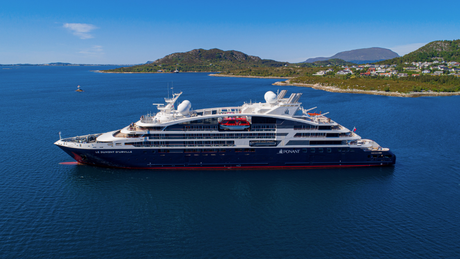
| Built | 2018 |
|---|---|
| Length | 131 metres |
| Lifts/elevators | Yes |
| Wheelchair accessible | Yes |
Featuring innovative and environmentally-friendly equipment, elegantly designed cabins, spacious suites with large windows, and lounge areas that open onto the outside, this new limited-capacity yacht boasting just 92 cabins and suites will offer you a truly unique cruising experience.
As the first ship in a new series, Le Champlain will embody the unique atmosphere that is the cruise line’s hallmark: a subtle blend of refinement, intimacy and comfort.
Aboard this ship that flies the French flag, you will experience the incomparable pleasure of an intimate cruise, with the possibility of exploring an ever-increasing range of destinations in an ethnic-chic ambiance with luxury service.
Experience a luxurious setting where the accent is on authenticity and passion for travel.
RESTAURANTS
As it is an essential part of French culture, gastronomy will naturally have pride of place aboard this new ship. Through its two restaurants, Le Champlain will invite you on a journey to elegance and epicureanism.
In a relaxed atmosphere, a first dining area located on Deck 3 and able to seat 70 will serve grilled meats daily, along with a variety of salads and desserts.
To the back of Deck 4, you will find a 260 m² panoramic restaurant which can accommodate all of our passengers in a single sitting. Designed differently to that on our other ships, this dining area, which opens onto the outside, will have a buffet of salads, desserts and cheeses at your disposal. Our discreet and attentive crew will provide table service for hot meals.
PUBLIC AREAS
Like Le Boréal and its sisterships, Le Champlain has many common areas that are designed and equipped to meet all of your needs while preserving the intimacy of each passenger.
A 140 m² reception area includes: A reception/concierge desk, An excursions desk, The ship’s administrative services, The sales office, manned by our Guest Relations Officer, Our 50 m² boutique which sells clothing, jewellery, beauty products, postcards and various accessories, Toilets accessible to passengers with reduced mobility.
A new hydraulic platform with adjustable height provides: Easier boarding than on any other cruise ship, Easier Zodiac embarkation and disembarkation for expeditions, Easier access to the sea for swimming and practising various water sports such as kayaking or paddle-boarding.
A pool deck offering: A pool with a panoramic view, equipped with a counter-current swimming system, A pleasant solarium, An outdoor bar and lounge with armchairs and sofas.
A 200 m² main lounge which can accommodate all of our passengers to share convivial moments and to host activities organised during the day or evening.
Lastly, a theatre that seats 188, equipped with: The latest sound and lighting technology, A LED wall as the stage backdrop, for the projection of high-resolution images and videos.
Please click the following links to read more about Ponant and the other Ponant cruise ships.
